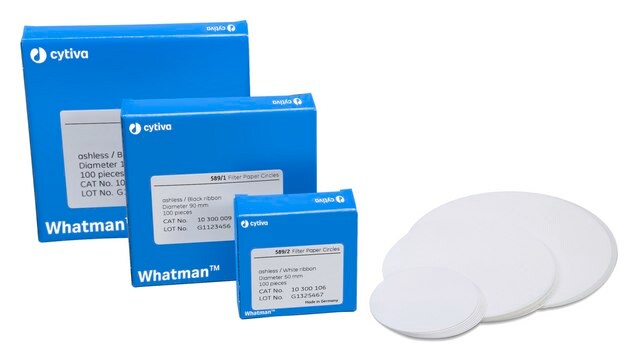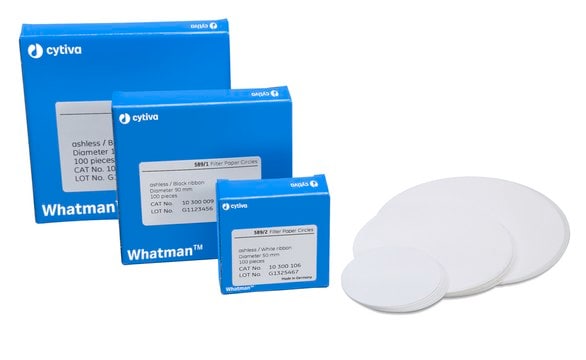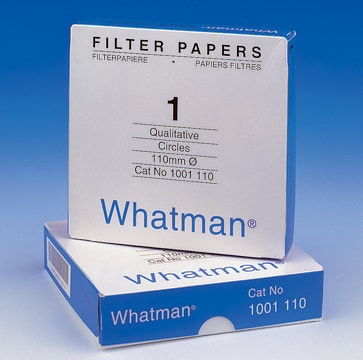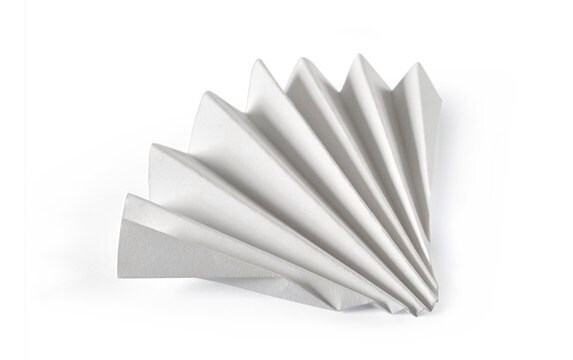WHA10300145
Whatman® prepleated quantitative filter paper, ashless, Grade 589/2 1/2 white ribbon
circles, diam. 150 mm, pack of 100
Sinónimos:
Whatman filter, Whatman paper, White ribbon filter, Z695424, paper filter
About This Item
Productos recomendados
Materiales
cellulose filters
circles
envase
pack of 100
fabricante / nombre comercial
Whatman 10300145
Whatman Article No. 28414123 (US reference)
Parámetros
70 sec/100 mL speed (Herzberg)
Diámetro
150 mm
grosor
180 μm
ceniza
≤0.01%
tamaño de poro
4-12 μm (Particle retention)
peso básico
85 g/m2
¿Está buscando productos similares? Visita Guía de comparación de productos
Categorías relacionadas
Descripción general
Ashless: 0.007% ash maximum for Grades 40 to 44 and a maximum of 0.01% for the 589 Grades-very pure filters suitable for a wide range of critical analytical filtration procedures.
Hardened low ash: 0.015% ash maximum-treated with a strong acid to remove trace metals and produce high wet strength and chemical resistance. These filters are particularly suitable for Büchner filtration where the tough smooth surface of the filter makes it easy to recover precipitates.
Hardened ashless: 0.006% ash maximum-acid hardened to give high wet strength and chemical resistance with extremely low ash content. The tough surface makes these filters suitable for a wide range of critical filtration procedures.
Grade 589/2 ½ : 4-12 μm (medium fast filter paper)
′White Ribbon Filter′, prepleated ashless standard filter paper for medium fine precipitates (class 2b acc. to DIN 53 135) offering medium filtration speed. Applied in a variety of routine methods in quantitative analysis, e.g., determination of the sand content in foodstuffs; determination of the grade of flour; or analysis of aqueous suspensions in the paper industry.
Características y beneficios
- High purity (< 0.01% ash)
- Retention of medium fine precipitates, such as grains of sand
- Herzberg filtration speed of 140 s*
- White ribbon filter
Otras notas
Información legal
Certificados de análisis (COA)
Busque Certificados de análisis (COA) introduciendo el número de lote del producto. Los números de lote se encuentran en la etiqueta del producto después de las palabras «Lot» o «Batch»
¿Ya tiene este producto?
Encuentre la documentación para los productos que ha comprado recientemente en la Biblioteca de documentos.
Nuestro equipo de científicos tiene experiencia en todas las áreas de investigación: Ciencias de la vida, Ciencia de los materiales, Síntesis química, Cromatografía, Analítica y muchas otras.
Póngase en contacto con el Servicio técnico


